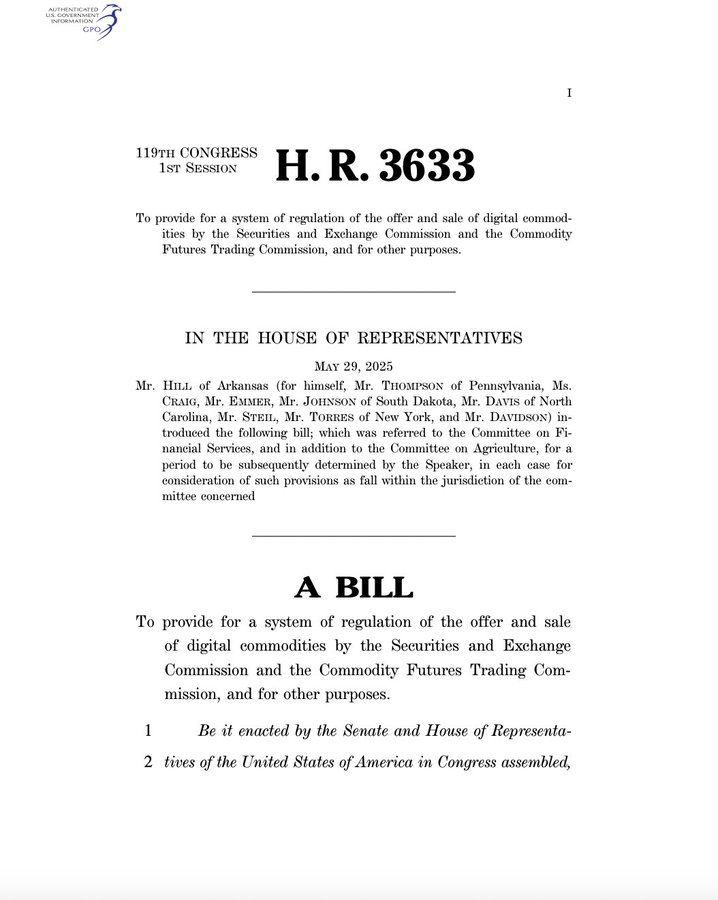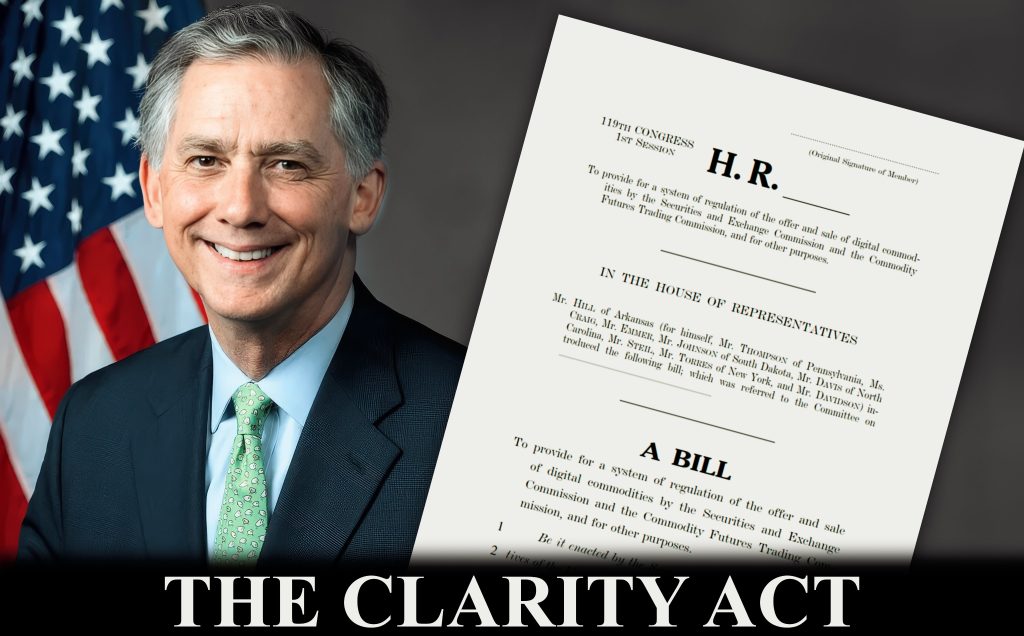Introduction
The rapid growth of digital asset markets and their increasingly important role in the global financial system increases the need for clear regulation in this area. The CLARITY Act (HR 3633) is a bipartisan bill introduced to the US Congress on May 29, 2025, that proposes a comprehensive framework for the regulation of crypto assets. In particular, the bill aims to resolve the jurisdictional confusion between the Securities and Exchange Commission (SEC) and the Commodity Futures Trading Commission (CFTC), both to protect investors and to promote the healthy growth of the industry.
Key Features of the CLARITY Bill
Elimination of Regulatory Uncertainty
The most important feature of the bill is that it introduces clear criteria for classifying digital assets as “Securities” or “Commodities”. This distinction aims to resolve the long-standing SEC-CFTC jurisdictional conflict, which has led to uncertainty in the industry. In particular, the concept of “mature blockchain systems” envisages a more flexible regulatory approach to sufficiently decentralized projects.
Comprehensive Consumer Protection Mechanisms
- Capital adequacy and segregation of client assets requirements for crypto exchanges and brokerage houses
- Increased sanctions and administrative penalties against fraud and market manipulation
- Protecting the right of individuals to use their own private wallets
- Transparency requirements and regular audit mechanisms
Approach to Innovative Financial Solutions
- Limited exemptions for decentralized finance (DeFi) protocols and blockchain developers
- Defining and regulating new business models such as “digital commodity exchanges”
- Establishing innovation labs and providing guidance at the SEC and CFTC
Economic and Strategic Objectives
- Strengthening the US leadership position in the global crypto asset market
- Enabling traditional financial institutions to enter the crypto space with confidence
- Encouraging technological innovation while maintaining financial stability
Differences with the GENIUS Bill
While CLARITY covers the entire digital asset ecosystem (Bitcoin, Ethereum, DeFi protocols, etc.), GENIUS focuses specifically on stablecoins (fixed-value cryptocurrencies such as USDT, USDC).
The main differences are as follows;
Regulatory Approach
- While in CLARITY, the authority is shared between the SEC and the CFTC, in GENIUS, the Treasury Department and the Federal Reserve are authorized.
- While CLARITY includes special arrangements for decentralized finance projects, GENIUS brings traditional financial institutions to the forefront.
Application Areas
- While CLARITY regulates mostly investment products, GENIUS focuses on payment systems and money transfer.
- While CLARITY’s global goal is crypto market leadership, GENIUS aims to strengthen the dollar’s dominance in the digital world.
Supporting Views
Industry representatives and some politicians argue that the clarity brought by the CLARITY Act will bring significant benefits:
- Investor confidence will increase with the removal of regulatory uncertainty
- US to take the lead in the global crypto market
- A balanced approach thanks to bipartisan support
Criticisms and Potential Risks
- Risk of subjective interpretation of “mature blockchain” criteria
- Compliance costs can be high for small-scale projects and startups
- Risk of abuse of DeFi exemptions and financial instability
- Tensions between the SEC’s traditional regulatory approach and the flexible nature of the law
Implementation Challenges
There is some uncertainty about how the law will be implemented in practice:
- The process of adaptation of regulatory bodies to new powers and responsibilities
- How to address differences in practice in different states
- Challenges in aligning with global regulations
Conclusion and Evaluation
The CLARITY Bill is an important step forward by introducing a comprehensive regulatory framework for the digital asset ecosystem. The bill takes a balanced approach, aiming to both protect investors and support financial innovation. However, uncertainties remain on how some of the details will be implemented. In particular, the approach to decentralized finance projects and the impact on small-scale enterprises are issues that need to be carefully monitored.
The final version of the bill could be an important milestone that will shape the US position in the global cryptoasset market. If successful, it could serve as a model for other countries and contribute significantly to the digital transformation of the financial system. However, maintaining the delicate balance between innovation and regulation is critical to the effectiveness of the legislation.
In conclusion, while the CLARITY Act has the potential to usher in a new era for crypto asset markets, the implementation details and the adaptation process of the sector should be closely monitored.
Disclaimer
This article is for informational purposes only and does not constitute legal, investment, or financial advice. Cryptocurrency investments carry risks and may not be suitable for all investors. Please consult a licensed financial advisor before making any investment decisions. The views expressed here do not necessarily reflect those of Darkex or its affiliates.







